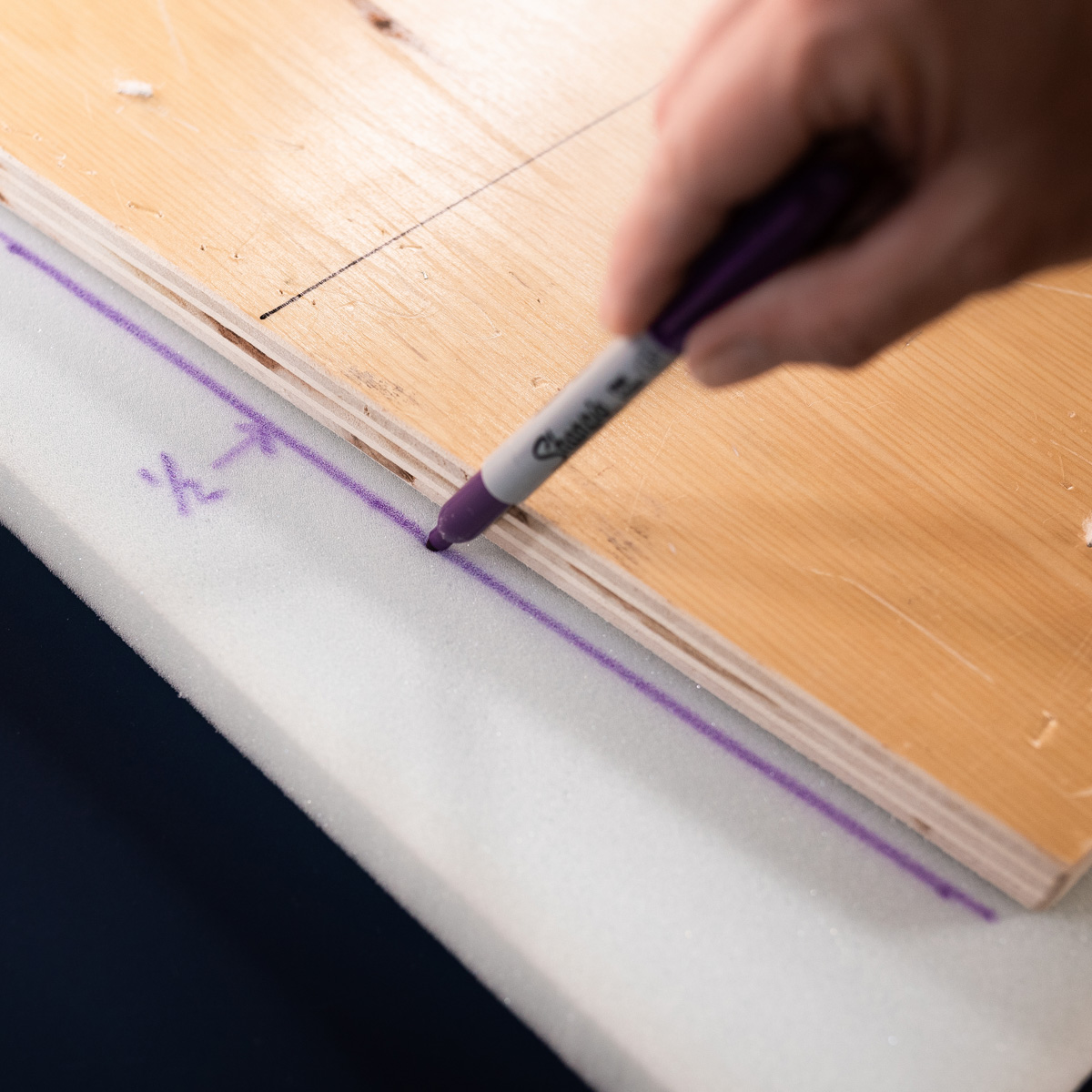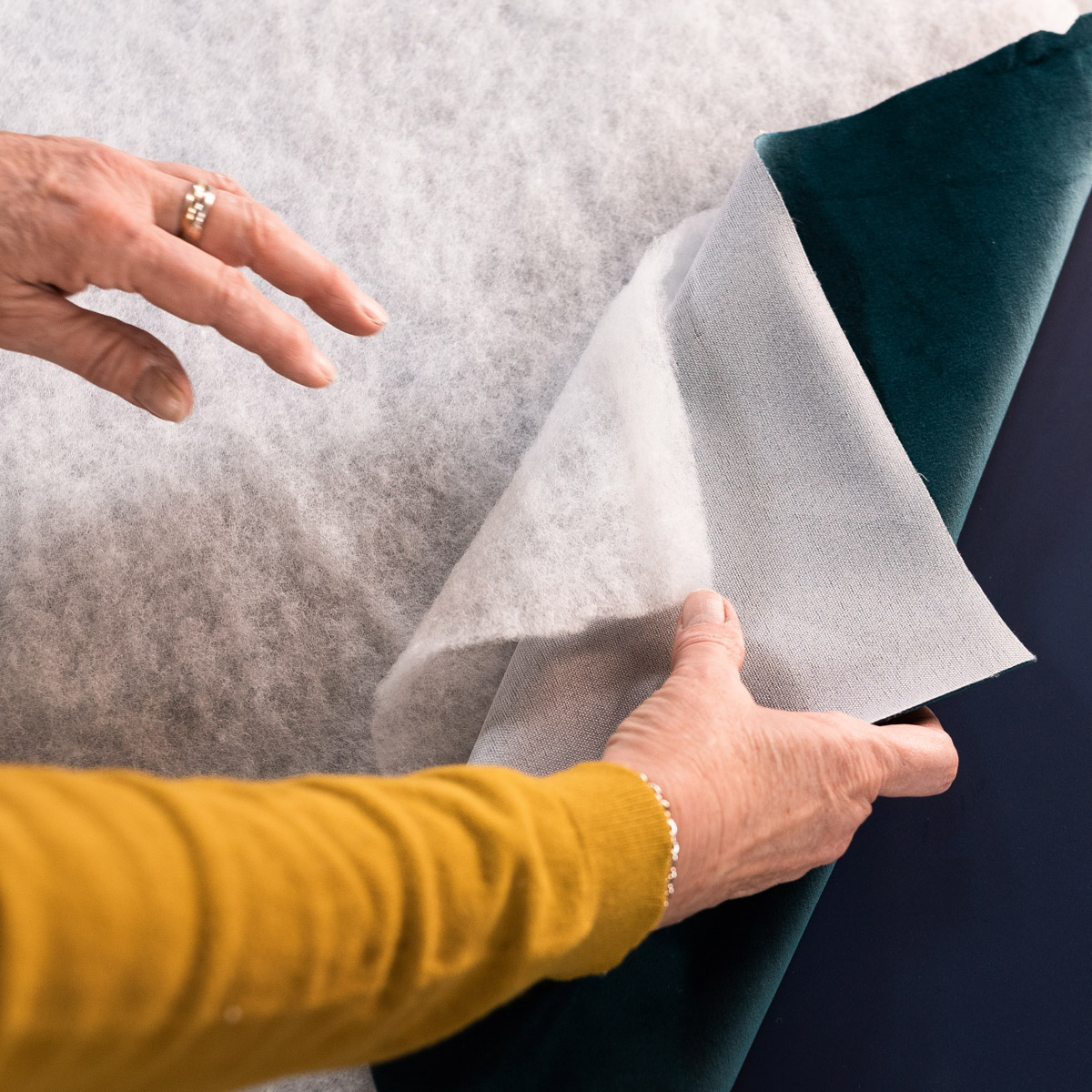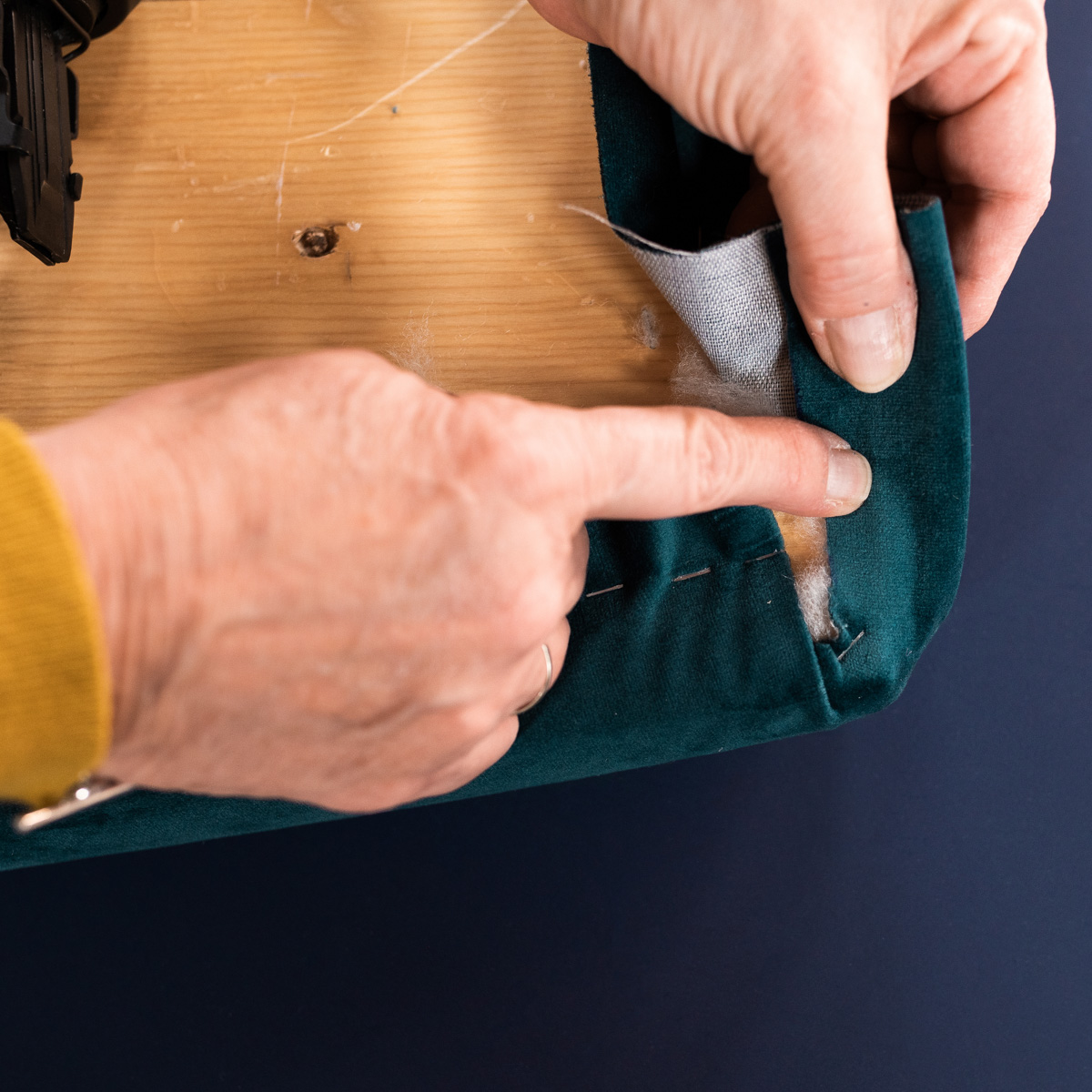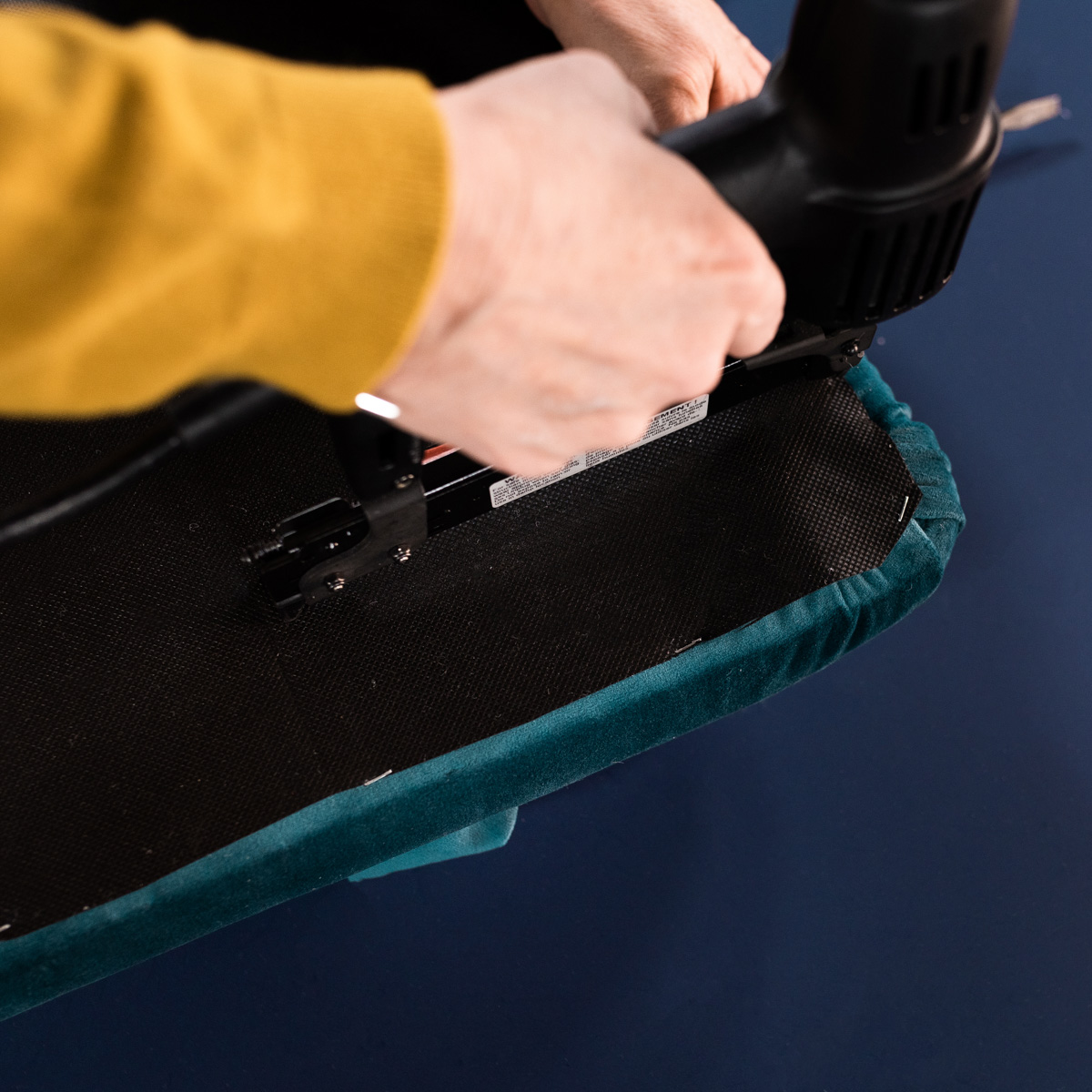Want to update the look of your chairs without having to buy new ones? Reupholstering the seat is the way to do it. Follow the steps below and such project will no longer have any secrets for you!
Video – Reupholstering a Chair (french only)
In this video, we will guide you through the steps to make this project a reality, and provide you with our best tricks.
Matériel requis
Choosing the Right Fabric
We recommend using upholstering fabric or leatherette. Fabrics don’t all have the same abrasion resistance. If you don’t use the right type, you may end up with fabric that is pilling or tearing after only a few weeks of use. However, a lighter fabric could be used for decorative chairs. It’s important to take into consideration the location and use of the chair prior to choosing the fabric. For example, if exposed to sunlight, a fabric that is fade-resistant (e.g., Sunbrella fabrics) is preferable. Furthermore, people with allergies should avoid fuzzy fabrics which easily collect dust.Trick – Prior to Starting
Before disassembling your chairs, make sure to identify each seat and chair with numbers. The holes are not necessarily at the exact same place on each one, so it will make reassembling easier.
Steps
Download the steps in PDF
Leave us your email address to obtain the upholstery steps in PDF.
Download the steps in PDF
Leave us your email address to obtain the upholstery steps in PDF.

Tip – Removing the Existing Fabric
We recommend removing the fabric to see the condition of the foam. Also, removing a layer will make the new fabric installation easier and provide a smoother finish. Too many layers will make the corners harder to work with.
Choosing the Best Foam for your Needs
To making an informed decision on the right foam to use on your chairs and choose the right density, resistance and thickness, read our article Everything to Know About Foam. If you plan on using your chair at a desk or a dining table, make sure to measure the required height of the seat. You must think of the leg room needed and the ergonomics when resting the elbows on the table. There is no single standard, it all depends on your table or desk, and the level of comfort you need.
Trick – Serrated Knife
When using a serrated knife, hold it horizontally on the foam, and pull lightly. Don’t do back and forth movements as it could make notches.


Why Use Batting (Kodel)?
The batting gives a smoother finish and is also necessary to smoothen the corners and sides of the foam. It protects the foam from rubbing on the fabric, and its expanding fibres will also fill the potential gap that could be created once the fabric has fully stretched.























